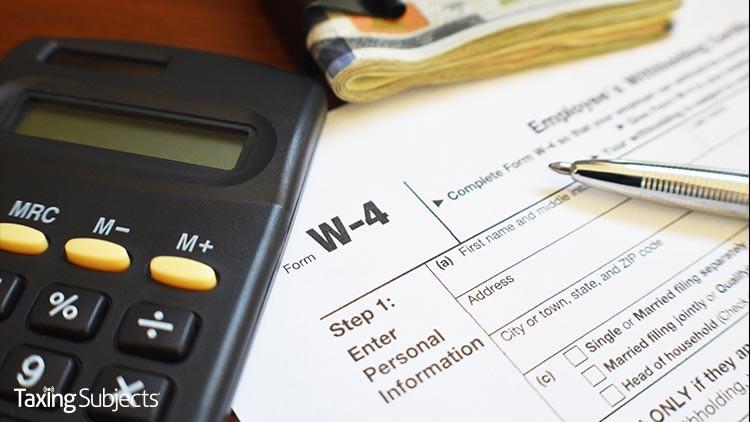by | Jul 13, 2021 | Tax Tips and News
Time is quickly running out to register for the 2021 IRS Virtual Nationwide Tax Forum. To see all the events—including access to all 30 webinars and IRS Commissioner Chuck Rettig’s keynote address—registration must be completed by Tuesday, July 13.
The event starts July 20 and runs through August 19.
Forum webinars will be live-streamed at 11 a.m. and 2 p.m. on Tuesdays, Wednesdays and Thursdays of each week.
To guarantee access, webinar registration has to be completed seven days before the webinar is scheduled. Those who register after July 13 won’t have access to all the webinars.
Participants should use the Forum schedule and course descriptions to plan their viewing.
Virtual Expo
Completed registration has another perk: The Forum’s Virtual Expo, featuring dozens of exhibitors from tax and business services, IRS national association partners as well as several key IRS offices. (Don’t forget to come see the Drake Software booth!)
Attendees can also check out the “IRS Zone,” where they get first-hand details on upcoming IRS initiatives and improvements from those in the know.
The Virtual Expo is open from noon to 2 p.m., and from 3 p.m. to 5 p.m. EDT every Tuesday, Wednesday and Thursday during the Forum.
Registered visitors, however, have access to the Expo 24 hours a day from July 20 to August 20.
IRS Takes Time to Listen
Another feature of the 2021 Tax Forum is a series of focus groups, where the IRS invites registered visitors to participate. Registrants can choose from:
- Improving the Taxpayer Experience
- Designing a Business Taxpayers Online Account & Envisioning a Form 1099 Filing Platform
- Changes in Partnership Environment & Where’s Form 944?
- Improving the Offer in Compromise (OIC) Experience & Gig Economy Worker Tax Compliance
- Passport Program & Virtual Currency Tax Compliance
- Interest Abatement Feedback & Civil Penalties and Reasonable Cause Relief
- Due Diligence Documentation Requirements for EITC, CTC, AOTC, and HOH
- Correspondence and Form Improvement
- Multilingual Resources
Continuing Education Credits
Registrants can also rack up continuing education (CE) credits by attending any of the 2021 Nationwide Tax Forum webinars. This includes enrolled agents, certified public accountants, Annual Filing Season Program participants, California Tax Education Council (CTEC) participants and Certified Financial Planners (CFP).
Two of the webinars will be presented in both English and Spanish, allowing participants to earn up to 28 continuing education credits.
For more information, see the CE and CFP Certification page online.
To register for the 2021 Virtual Nationwide Tax Forum, or to get more information on the event, visit the IRS Nationwide Tax Forum website.
Source: IRS Nationwide Tax Forum kicks off July 20.
– Story provided by TaxingSubjects.com
by | Jul 10, 2021 | Tax Tips and News
We’ve all been there before: We got a new job, and on the first day, our new boss puts a Form W-4 on our desk and tells us to fill it out for withholding.
It takes a bit of math and what feels like a good helping of guesswork to figure out just how much tax we need to withhold from a paycheck. Too little, and we could owe a hefty sum when we file; too much, and the IRS hangs onto it until we get a tax refund. Luckily, the Internal Revenue Service has an online tool that can help taxpayers determine how much they need to withhold.
The Tax Withholding Estimator on IRS.gov does just what it says: help taxpayers determine whether their employer is withholding enough tax or if they need to fill out a new Form W-4. The tool is available for regular employees, but also for retirees, self-employed taxpayers and others—virtually anyone who gets a regular paycheck.
With just three easy steps, the clouds of uncertainty can begin to clear.
Step One: Gather Documents
This first step should be completed before taxpayers bring up the Estimator. Users will need a copy of their most-recent pay stub and tax return. Once those items are in hand, the user can go online and use the Tax Withholding Estimator on IRS.gov.
Users should read all the information and directions presented there. To move on, click the blue Tax Withholding Estimator button.
Step Two: Answer Questions
Once they’re done with the opening information, users get down to giving the tool with the information needed to come up with the correct withholding amount. This is done by merely answering the questions posed on-screen about the user’s tax situation.
As the user completes a section, clicking the blue Next button sends them to the next step.
Step Three: Review Results
The Estimator helps users aim for a tax-due amount that’s close to zero—or a refund.
Depending on the information given by the user, the tool may deliver a recommendation to submit a new Form W-4, Employee’s Withholding Allowance Certificate. The W-4 goes to the employer, not the IRS, and is used to change the amount withheld each pay period.
Many times, employers use an online method for making changes in withholding, so workers should check with their employers before filling out a paper form.
Taxpayers who get a pension can use their results to fill in a Form W-4P, which goes to the payer.
Source: What taxpayers need know about using the IRS Tax Withholding Estimator.
– Story provided by TaxingSubjects.com
by | Jul 8, 2021 | Tax Tips and News
New guidance from the Internal Revenue Service tries to clear up questions some transportation companies may have about pandemic-related federal grants.
The agency has published a series of frequently asked questions aimed at giving these companies a better idea of what is taxable and what isn’t when it comes to Treasury grants they may have received during the COVID-19 pandemic.
Grants from the Department of the Treasury were authorized by the Coronavirus Economic Relief for Transportation Service (CERTS) Act, which was part of the Consolidated Appropriations Act of 2021.
The legislation allows federal grants to qualified to companies providing transportation services that suffered annual revenue losses of 25% or more due to the pandemic. Qualified services include eligible motorcoach companies, school bus companies, and passenger vessel companies.
The IRS says the grants are generally meant to offset payroll costs stemming from the pandemic, although grant money can also be used for some operating expenses. This means a grant can be used to pay for services or equipment the company had to acquire in order to protect their employees and customers from the coronavirus; grants can also be used to repay debt the company incurs to maintain its payroll.
Any grant funds not used for an eligible activity within a year of their receipt, however, go back to the Treasury Department.
The IRS’s Frequently Asked Questions on the topic answer two major questions for transportation companies with grants:
Are the grants taxable?
Yes, the receipt of a CERTS Act grant is not excluded from the recipient’s gross income under the Code and therefore is taxable.
Are costs for which the grants are used deductible?
Yes, the costs are deductible to the extent that they are otherwise deductible under the law. The tax law generally permits the payment of wages, salaries, and benefits to employees and other amounts paid to carry on a trade or business to be deducted as ordinary and necessary business expenses.
For more on tax relief for companies affected by COVID-19, see the IRS website at IRS.gov.
Source: IRS provides answers for certain transportation companies eligible for Treasury grants
– Story provided by TaxingSubjects.com
by | Jul 7, 2021 | Tax Tips and News
For self-employed taxpayers and household employers, it’s time, as they say, to pay the piper.
The CARES Act—also known as the Coronavirus Aid, Relief and Economic Security Act—gave these specific taxpayers permission to defer paying certain Social Security taxes for tax year 2020.
“Defer” is the operative term; this change did not eliminate the need to pay Social Security tax owed. Half of the deferred Social Security tax is due by Dec. 31, 2021; the other half is due in Uncle Sam’s pockets by Dec. 31, 2022.
The deferred taxes can be paid any time on or before the due date.
What are the options for repayment of Social Security tax?
The IRS says taxpayers wishing to repay Social Security taxes can use the Electronic Federal Tax Payment System (EFTPS) or pay with a credit or debit card, money order, or check. Further, the agency stresses these payments:
- Should be separate payments from other tax payments to ensure they are applied to the deferred tax balance on the tax year 2020 Form 1040 since IRS systems won’t recognize the payment for deferred tax if it is with other tax payments or paid with the current Form 1040.
- Should designate the payment as “deferred Social Security tax.”
Those paying deferred Social Security tax using EFTPS should select 1040 US Individual Income Tax Returns and set the type of payment to deferred Social Security tax.
The payment should be applied to the 2020 tax year, since that’s where the payment was deferred.
Another payment option is to set up a same-day wire transfer of funds. Keep in mind, however, this option may entail a bank fee to complete. Some other electronic options for paying taxes, such as Electronic Funds Withdrawal or IRS Direct Pay, may not apply to this type of payment.
For more information on the payment of deferred taxes, go online to EFTPS.gov.
What if a taxpayer is unable to pay in full?
Taxpayers unable to pay the complete amount of deferred tax are advised to pay whatever they can by each of the two due dates to limit penalty and interest charges.
Taxpayers get a balance-due notice from the IRS if they don’t pay the full installment amount. To make a payment or to apply for an IRS payment plan, follow the directions given in the notice.
For more information on ways to pay, what to do when taxpayers can’t pay and viewing their tax account, visit the Paying Your Taxes webpage on IRS.gov.
Sources: How self-employed individuals and household employers repay deferred Social Security tax; Paying Your Taxes.
– Story provided by TaxingSubjects.com
by | Jul 3, 2021 | Tax Tips and News
Monthly Advance Child Tax Credit payments are set to begin in two weeks. While it’s too late to change the bank account that will receive the July 15 payment, qualifying taxpayers can now use a tool on IRS.gov to update their information before the August payment is issued.
The Internal Revenue Service announced a new feature for the Child Tax Credit Update Portal this week that will let users change the routing number used to receive direct deposits of the monthly advance payments. Those who want to update their account in time for next month’s payments need to do so by August 2—otherwise, the agency will send money using the method currently on file on August 13.
Check eligibility and more with the Child Tax Credit Update Portal.
Prior to the most recent feature update, the Child Tax Credit Update Portal still served as an important payment management tool for taxpayers—like helping families determine eligibility for the credit and choosing their payment method.
“First, families should use the Child Tax Credit Update Portal to confirm their eligibility for the payments,” the IRS says. “If eligible, the tool will also indicate whether they are enrolled to receive their payments by direct deposit.” The displayed information is where the July 15 payment will be direct deposited, “and if they don’t change the account, all future payments will go there as well.”
The IRS says that everyone should choose direct deposit for these monthly payments, citing speed, security, and convenience. Luckily, opting into direct deposit only requires entering three pieces of information:
- Routing number
- Account number
- Account type
When it comes to the type of account, users need to “[indicate] whether it is a savings or checking account.”
What if someone doesn’t want to get monthly advance payments of the Child Tax Credit?
The IRS notes that some taxpayers may not want to receive the Advance Child Tax Credit payments. Some might not want to deal with reconciling the payments next year (Topic H under the Child Tax Credit FAQ), while others may have one of the following reasons:
- Their income in 2021 is too high to qualify them for the credit.
- Someone else (an ex-spouse or another family member, for example) qualifies to claim their child or children as dependents in 2021
- Their main home was outside of the United States for more than half of 2021
Regardless, the IRS says the Child Tax Credit Update Portal will even let taxpayers opt out of the monthly payments: Simply choose the “unenroll feature.”
To learn more about the Child Tax Credit Update Portal and the Advance Child Tax Credit payments, visit IRS.gov.
Source: IR-2021-143
– Story provided by TaxingSubjects.com
by | Jul 3, 2021 | Tax Tips and News
New guidance from the Internal Revenue Service and the Treasury Department is aimed at keeping the lights on at renewable energy projects delayed by the COVID-19 pandemic.
Previous IRS notices gave eligible renewable energy projects a Continuity Safe Harbor, giving the green light to claim the production tax credit and the investment tax credit, as long as the overall project goes on line within a certain period of time.
Under this scenario, the clock starts ticking in the taxable year that construction started.
Unfortunately, there’s a problem.
Even with the recent inroads made against COVID-19, the pandemic has continued to impact construction of renewable energy projects, pushing them farther behind schedule, putting them at risk of missing the Continuity Safe Harbor deadline altogether.
This new guidance delivers relief to renewable energy projects that have been hit by pandemic-driven project delays, allowing them more time to comply with the Continuity Safe Harbor. It also introduces more flexibility for these projects to choose which way to best fulfill the continuity requirement outside of the safe harbor.
How does the safe harbor work?
The changes are laid out in Notice 2021-41. This new guidance gives qualified renewable energy projects a choice of two ways to show the taxpayer’s started construction on the project: the Physical Work Test, or the Five Percent Safe Harbor.
Once construction begins, the project has to make continuous progress toward completion in order satisfy requirements.
If the Physical Work test is used, the project falls under the Continuous Construction Test to show that the project has made continuous progress. With the Five Percent Safe Harbor method, the project is measured under the Continuous Efforts Test.
Notice 2021-41 extends the Continuity Safe Harbor period beyond that announced previously and covers renewable projects that started in 2016 through 2020:
- For projects for which construction began under the Physical Work Test or the Five Percent Safe Harbor in 2016, 2017, 2018, or 2019, the Continuity Safe Harbor is satisfied if the project is placed in service by the end of a calendar year that is no more than 6 calendar years after the calendar year during which construction began; and
- For projects for which construction began under the Physical Work Test or the Five Percent Safe Harbor in calendar year 2020, the Continuity Safe Harbor is satisfied if the project is placed in service by the end of the calendar year that is no more than 5 calendar years after the calendar year during which construction began.
In addition, the notice also gives qualifying projects a kind of escape hatch.
If the Continuity Safe Harbor doesn’t apply to their project, taxpayers can still satisfy the continuity requirement if they can satisfy either the Continuous Construction or the Continuous Efforts Tests.
This provision can be used regardless of the method the taxpayer used when construction commenced.
For more information about tax relief for businesses impacted by the COVD-19 pandemic, see Coronavirus Tax Relief for Businesses and Tax-Exempt Entities.
Source: Treasury, IRS extend safe harbor for renewable energy projects.
– Story provided by TaxingSubjects.com






